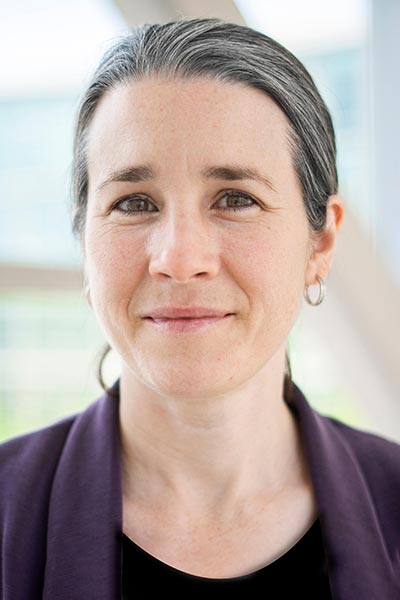
For many years, small cell lung cancer’s structural plasticity flummoxed researchers. Indeed, for a period, many in the field believed small cell lung cancer (SCLC) constituted multiple diseases. Thanks to the work of trailblazing researchers like Trudy G. Oliver, PhD, modern-day investigators have since reached the consensus that SCLC is a singular, highly plastic disease.
Dr. Oliver, who is a professor of Pharmacology and Cancer Biology at Duke University, Durham, North Carolina, explored breakthroughs in the understanding of the plasticity of SCLC subtypes during the opening keynote address at the IASLC 2023 Hot Topic Meeting: Small Cell Lung Cancer.
“Dr. Oliver has really made significant contributions to the small cell field,” said Kate Sutherland, PhD, laboratory head at the Walter and Eliza Hall Institute of Medical Research at the University of Melbourne, Australia. “She was the first to develop a small cell mouse model that we now affectionately know as the RPM Model, which was not exclusively ASCL1-high. Using this model, she really elegantly demonstrated the existence of subtype plasticity in small cell and its association with disease progression.”
Distinct SCLC subtypes have been defined by the expression of ASCL1, NEUROD1, POU2F3, or YAP1 genes. Dr. Oliver’s research has helped reveal that MYC genes drive the dynamic evolution of SCLC subtypes. For example, MYC activates Notch to dedifferentiate tumor cells, leading to a temporal shift in SCLC from ASCL1-positive to NEUROD1-positive to YAP1-positive states in neuroendocrine cells. These findings suggest that tumor cell plasticity is among the primary factors determining SCLC subtypes.
“The prediction here was if a human tumor arises from a single cell, and we see multiple subtypes in a human tumor, there must be some kind of plasticity between these states. That’s basically what we saw,” Dr. Oliver explained. “Undoubtedly, this heterogeneity and plasticity are going to contribute to therapeutic resistance.”
With the acknowledgment that SCLC is a moving therapeutic target, investigators have begun to search for a novel way to effectively control the “landscape” of the disease by erecting barriers between the transitional states of tumors or possibly increasing the homogeneity of these cell types to target them more effectively.
Dr. Oliver also explained that plasticity should impact researchers’ conventional conception of “cells of origin” in SCLC. She shared data that shows genetic alterations can change the permissivity of cells of origin. She also cited the histological conversion of adenocarcinomas, which can emerge during treatment resistance as SCLC or prostate neuroendocrine tumors.
“Plasticity drives this kind of phenotype, and we have to be careful about how we use the word cell of origin,” she said. Dr. Oliver suggested that investigators should consider elements like permissivity, similarity, and trans- or de-differentiation when using the term.
A promising path forward for advancing SCLC therapies may come from conserving developmental trajectories across tumor tissues. For example, ASCL1 and POU2F3 are inversely related across tumor types, including SCLC and neuroendocrine prostate cancer.
“We can learn a lot from other fields where they see similar developmental paradigms and it may also help us rethink how we treat tumors across different tissues,” Dr. Oliver concluded.





